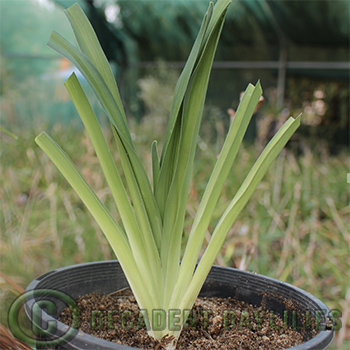Daylilies the Hemerocallis species grow to be frost resistant and reasonably drought tolerant, and the foliage should withstand frosts and snow in the winter. They are a good choice for low-maintenance gardens. Even though these plants offer easy care, it is necessary to know how to maintain healthy daylilies. Many people tend to cut back the daylilies foliage once the plants have finished flowering, but this will harm the flowering of the plants, while it is best to let the leaves die back naturally on their own and refrain from cutting the greenery after the daylily flowers have faded. Here are the guidelines on cutting back the foliage as well as pulling out the old dry stems and old dry leaves all summer. Keeping up the maintenance that daylilies deserve so that the daylily will remain in your garden to make multiple divisions for many years.
Do you Cut Back Daylily Leaves after Flowering?
There are many benefits to trimming back daylilies, the trick is knowing when to trim back the foliage of a daylily. It is best not to cut the foliage of the daylilies just after they bloom however, you can cut the long flowering stalk called scapes after the flowering stops in the clump. But do not try and pull the old flower stems from the crown while they are green, otherwise, you will damage the crown tissue. It is best to take off the flower stalk only when it is brown and comes away easily from the crown. Pull off any dead leaves so they are removed completely. If you want to gather some seeds you can consider leaving some stalks with seed pods to mature and wait till the seedpods have split open and gone brown, revealing jet black seeds, this shows that the seeds are ready to be harvested. Cutting off the stalk 3 to 4 inches above the crown will reduce the risk of daylily pests attacks and diseases. You can do this, trim the damaged leaves or any leaves that show any discolouration (pictured). This can be any yellow outer leaf or any daylily leaves showing any signs of browning as well. It may be tempting to cut all the foliage to the ground but do not make the mistake and be ruthless. If you value your daylily plants this is not the right thing to do or the right time to do this especially straight after the main flowering season to late summer. It does not help the daylily plant at all, it is best to leave the inner new green foliage intact and just remove and clear any debris that has withered and died completely at the base of the plant. New leaves continually grow and emerge to replace the outer old leaves from the centre of the crown of the daylilies, replacing the old dead foliage, this is a constant cycle with the foliage of the daylily.
The Best Time to Cut Back Daylilies Foliage
The best time to cut back foliage to avoid the messy look is when the leaves start dying and start to turn brown in late autumn or early winter.
- You can wait till all the leaves die and can be easily pulled away off the base of the plant.
- You can cut the daylilies at a height according to their growing habit as well, meaning dwarf and miniature daylilies can be cut back shorter giving them a light prune.
- There are some varieties that entre into a dormant stage during late autumn and there are some evergreen varieties which will continue to re-bloom or get a second flush of blooms till the winter.
- If you want to propagate daylilies, you can divide clumps and cut back the leaves to 6 or 7 inches tall and re-plant them just after the summer heat subsides.
What Happens when Daylilies are Cut Off at the Wrong Time?
If you want to cut down the leaves, it is best to pull off any dead daylily leaves to tidy your garden landscape. Avoid cutting the leaves too short, this can make the daylily plant weak. You should never cut off the long foliage after the main flowering season has finished in early summer, this helps in photosynthesis and provides and stores the food for proper growth of roots and leaves and flowers for the coming year as well as in the winter. When there is no proper food supply the roots will not be able to prepare themselves for surviving the winter and the following seasons. This will result in growth of plants, which are not healthy and can have a great impact to produce quality bloom in the next spring and summer. Cut daylily leaves by pruning the outer leaves only, do this just before the winter frost season, is the best and most suitable time to prune daylilies.
Some Ideas to Help If you have evergreen daylilies you can allow the faded leaves to stay on the plant till spring. If you are in colder areas with snow fall, the daylily detritus might form the food for insect larvae and rodents. Then you need to cut the leaves leaving them 6 inches above the crown after the first frost. If you are in the area where spring is often wet, the daylily plants will be at risk of fungal attacks. You can spread a layer of mulch over the daylily bed after you cut off the dead leaves during late autumn. The mulch will help protect the roots of the plant from cold winter temperatures.


Comments
Pingback: Daylilies Winter Care - How To Care For Daylilies In The Winter - Decadent Daylilies Australia